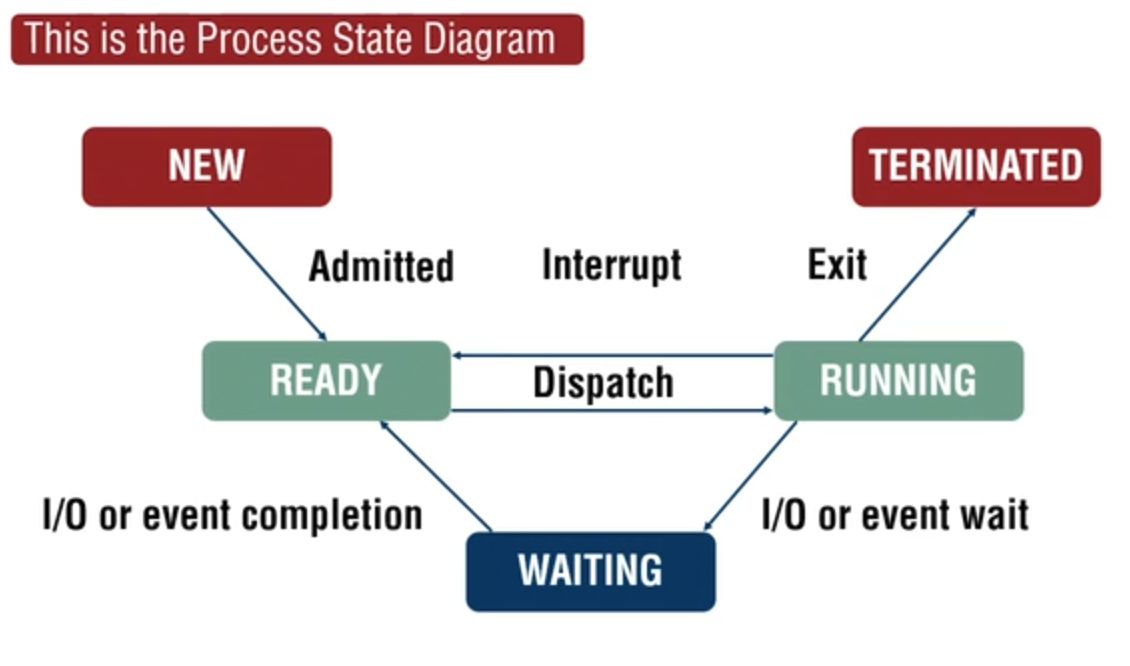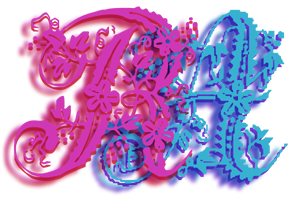Current day computer system allows multiple programs to be loaded into memory and to be executed concurrently.
A process is a program in execution. It is created and terminated, and it allows some or all of the states of process transition, such as:
Threads are small programs. There are two types of threads
An operating system that has thread facility, the basic unit of CPU utilisation, is a thread.
A process being an active entity, changes state as execution proceeds.
OS_Unit 02a: Transcript
Let's discuss the topic process state. Currently computer system allows multiple programs to be loaded into Memorial and to be executed concurrently. This evolution requires more coordination and control of the various programs. At the end of the topic, we'll able to understand the processes state, roll out every state to run the process, describe the work mechanics of process estate. Let's discuss the process. A process can be simply defined, defined agile program execution. A process is created and terminated, and it allow some or all of the estate of the process transition. Such, such new ready, running, waiting exit. There are main five states, new, ready, running, waiting, and exits. And these, uh, states make go the process completion. If any process want to complete that time, it'll go, uh, from the these features. Let's discuss the three, A three single sequence stream, which allow a program to split Excel in two, two or more. Simul ten three running task trades and process differ from the operating system to another. But in agenda, a trade is contained inside a process and different trades in the same process. Share some resources with different process. Do not trades, uh, can, uh, share the information from one process to another. Process. Trade are smaller programs that can perform a specific task. These are two types of a trade user thread and kernel thread. User thread managed by the users and kernel thread managed by the kernels and operating system that has a third facility, the basic unit of the utilization Asia three. Let's discuss the process. States a process being an activity change state and execution of a process. Then, uh, will be make the program. This program is a pass if it is not enough or unable, if the process going to run that time. This, uh, if the pro program going to run that time. This program is called the process. So there is a slightly difference, but you are make the program. This is the, because it is not in a running condi, uh, you are not going to run when you are going to run this program. And then this program become a process. And this is now the active entity when programs becomes the active. That time, this program is called the process. And the process can be any of the following states. New, uh, process being created, running, instructions being executed. It is running means the process is going to execution. This is the running escape means, uh, suppose that if you make the print off of five pages, that time you make the print, the control P are new when you are doing the control P for the print. But when operating system take the instructions for the print, that time the, uh, the instruction are executed. And this is called the running. When the printer take the print command and give the printing according to the command. So this state is called the running and waiting. Sometimes it's called, also called the BLO blog process, waiting for an event to occur and, uh, waiting, uh, sometimes occur. Suppose that if you are going to the, uh, print, uh, in a printer, but printer is already busy and someone already given the command for the printing, that time your process will be in a betting estate. So this type of condition is called the betting and also the example of a betting estate. Supposed you have a, uh, give the printer, uh, statement, and that time there is a no page in a printer. That time, uh, the process will be blocked because there is no page two to a print. And, uh, when you will, uh, insert the page in a printer that time, it'll again run the process. So that time the process is a blocked. So there, there are similar. The block means they are also going to the waiting and even to occur. It is a, it's supposed that there are, uh, not availability of resources and the ready process waiting for the CPU ready. It is a ready, but the CPU is not supposed that you are going to run the process. It is already but CPU uh, uh, pro process waiting for the C-P-U-C-P-U will take the, this process. This situation is called ready termination. The process has finished the pre execution. It's called the termination. For example, uh, when, uh, you, we have given the print command and the printer take the print command and we are given the only five page printing and the pro printer. Take the one page, two page, three page four page, five page. And finally it print the five page. It means the process is terminated and the process is completed. If the another process that time, it'll take the another termination. If the third process that time, it'll take the third termination. So don't be confused if we are giving the three process simultaneously that time. If all the three process will be terminated, that time we'll give, give the termination. No. If the every process is are individual, that time, every process should be individual terminated. Let's discuss the processes, the diagram. Uh, here you can see there are a new ready, waiting, running and terminated, which I discussed. Uh, in a later slide, previous slide. Here you can see a new means admitted to the work and ready to input our in, uh, ready for the running. And it goes farther running. You can see the ready goes farther running and in a running after the running it go further. Termination. It is a simple and uh, it steps if the processor is not which, and there is a no block condition is occurred. Suppose if the process is ready and going further running and there is a input output even occur, suppose that the printer is a busy right now, that time it'll go for the waiting stage and after the waiting estate, again, it'll go further ready or when it, it input output is occur. Uh, and it even is called that time, itll go for the running estate. After the running estate, it'll go further. The second process is this. If the ready is running and something block, block condition interrupted, occur that time running sent to the ready estate and after the clearance, it'll again go to the running. So this is the simple, uh, process diagram and there are five main steps. New, ready, waiting, running, and terminations. In this topic, you learn that a program is a unity example, a file owner disc. This is the passive. When the program is on a running stage. That time it's called the activity. And this program is called now called the process. So process is a activity. Running and ready state are similar. The process is willing to run only in the case of a ready state. The fish process will be run if the process will be in a ready queue, if the process in a ready queue after the ready queue. This process will be transport, further running state. Only one process can be running on any processor at any instance. If there are a multiple process, that time only one process will be run at that time. So we can say, uh, in a running estate, only one process always will be executed and other process may be in a ready estate or waiting states. Uh, this brings us to end of the topic.





